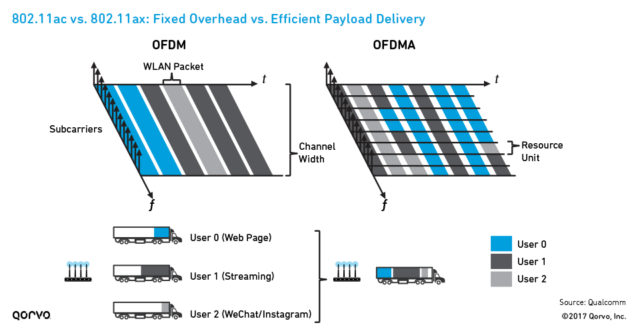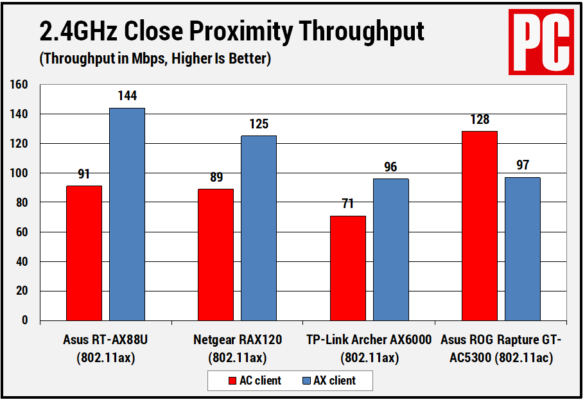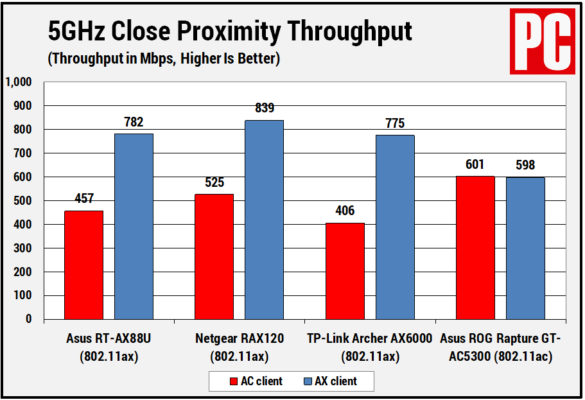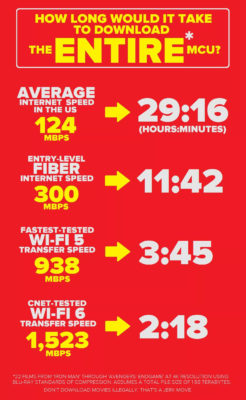
The issuance of certificates began on September 16 last year. Since then, many articles and notes have been published about the new wireless standard, including on Habré. Most of these articles are technical specifications of the technology with a description of the advantages and disadvantages.
Everything is fine with this, it should be so, especially on technical resources. We decided to try to figure out why WiFi 6 is for an ordinary user. Business, industry, etc. - here you can't do without new communication protocols. But will WiFi 6 change the life of the average person who is not going to download terabytes of movies? Let's try to figure it out.
Previous generation WiFi problem
The main problem is that if you connect many devices to the wireless access point, the speed drops. This is familiar to anyone who has tried to connect to a shared hotspot in a cafe, mall or airport. The more devices are connected to the access point, the slower the Internet works. All these devices "compete" for the channel. And the router tries to choose which device to give access to. Sometimes it turns out that a smart light bulb gets access, and not the phone on which the most important video conference is running.
And this is a very important drawback that is sensitive for the average user. Companies for which reliable communication is important, somehow get out of the situation by installing additional access points, reserving communication channels, etc.
What about WiFi 6?
Increase in performance and channel stability The
new standard cannot be called a panacea, it is not a qualitatively new technology, but an improvement on an existing one. Nevertheless, one of the new products is very important, it is about the OFDMA technology. It significantly increases the speed and stability of the channel, allowing it to be divided into several (and, if necessary, a large number of subchannels. "To all sisters - by earrings", as the saying goes. Well, in the case of WiFi 6 - to each gadget through its own communication channel. This is called orthogonal frequency division multiple access.
The old standard, if we take a logistics company as an analogy, sends goods in turn, and each client is sent a separate car with its own cargo. These cars do not leave at the same time, but on schedule, strictly after each other. In the case of WiFi 6, one car carries all parcels at the same time, and upon arrival, each recipient chooses his own parcel.

Plus, the advanced MU-MIMO technology makes it possible to simultaneously transmit a signal, which was also possible for devices that support the old wireless communication standard, and also receive it. The result is that there is no signal interference, if you take two access points with WiFi 6 support and put them side by side, they will each work on their own communication channel, without any problems. And each will receive a signal that is directed by "its" device. Well, the number of simultaneous connections has been increased to 8.
The previous communication standard did not give the access point the ability to distinguish between "own" traffic from "foreign". As a result, in apartment buildings, the data transfer rate is relatively low, since the routers, picking up other people's signals, “consider” that the communication channel is loaded. WiFi 6 does not have this problem thanks to the BSS Coloring function, which allows you to recognize "friends" and "foes". Data packages are digitally signed, so there is no confusion.
Increased speed
It grows. The maximum bandwidth of the communication channel reaches 11 Gbps. This is possible not only thanks to everything described above, but also due to the effective compression of information. The new wireless chips are more powerful, so encoding and decoding is faster than before.
The speed gain is significant. For example, even at the start of this technology, the PCMag editorial office in its building with a huge number of different smart devices, smartphones, access points was able to achieve an increase in speed up to 50% using different routers.


CNET managed to achieve an increase from 938 Mbps to 1523!

Increasing the battery life of devices
We are talking about laptops, tablets and smartphones. WiFi 6 has a wake-on-demand feature, Target Wake Time (TWT). Devices that support this function can last significantly longer than those that are not compatible with the new standard.
The fact is that with each access to the device, a time period is set after which the WiFi module of the gadget is activated, or, conversely, put it into sleep mode.
When can you take advantage of WiFi 6?
In general, already now, but there are a number of limitations. Firstly, not many routers support this standard, although their number is increasing. Secondly, the router is small, the wireless connection of the sixth generation must be supported by the device connecting to the access point. And besides, the communication channel "provider-router" must also be relatively fast, otherwise nothing good will come of it either.
Well, answering the question posed in the title, we will answer that yes, WiFi 6 is needed for an ordinary user, the new standard will make life much easier for all of us, both at work and at home. Stable and fast connection that conserves battery power of a laptop or smartphone - what else do you need to be happy?
What does Zyxel have?
Zyxel has announced three new 802.11ax business access points to keep pace with the times. They will work great both in apartments and in offices. The new devices increase wireless bandwidth up to six times, even in high-density environments. The connection is stable, and data transmission latency and packet loss are reduced to a minimum.
As for the devices themselves, these are:
- Access point Zyxel NebulaFlex Pro WAX650S . It provides a data transfer rate of 3550 Mbps (2400 Mbps in the 5 GHz frequency range and 1150 Mbps in the 2.4 GHz frequency range).
- Zyxel NebulaFlex Pro WAX510D. 1775 / (1200 / 5 575 / 2.4 ).
- Zyxel NebulaFlex NWA110AX. 1775 / (1200 / 5 575 / 2.4 ).